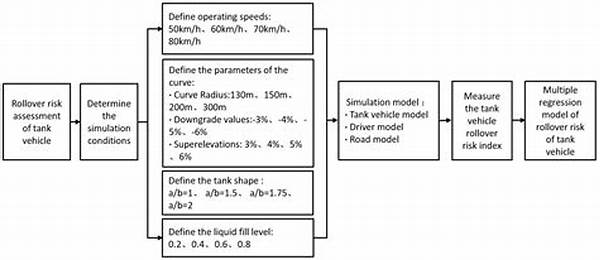Rollover Risk Assessment Methodologies
In the field of financial risk management, understanding and evaluating rollover risks is of utmost importance. The nuances of rollover risk assessment methodologies require careful scrutiny as they play a critical role in ensuring the financial stability of institutions. These methodologies encompass a wide range of techniques that help identify, evaluate, and mitigate the risks associated with debt refinancing. In an ever-evolving economic landscape, maintaining a robust approach to these assessments is vital for effective risk management.
Read Now : Comprehensive Sonata Safety Evaluation
Understanding Rollover Risk
Alright, let’s break it down. When we’re talking about rollover risk assessment methodologies, we’re diving into the wild world of financial checks and balances. It’s all about figuring out if a company can pay off its existing debt by rolling it over into new debt. Think of it like paying off one credit card with another – risky and a bit sketchy if you’re not careful. This process involves a lot of number crunching and deep diving into financial stability to make sure everything’s kosher. You’ve got to keep an eye on interest rates, market conditions, and the company’s cash flow.
For businesses, staying ahead of the game with solid rollover risk assessment methodologies means dodging financial disasters. It’s like having a crystal ball for spotting trouble before it arrives. You need to be savvy with both the current and future market vibes, keeping your radar tuned to any economic shifts. So, in this finance game, playing it smart is the name of the game because one wrong move could send your financial plans tumbling like a house of cards.
Key Factors in Rollover Risk Assessment
When it comes to rollover risk assessment methodologies, there are some key factors to keep in mind:
1. Interest Rates: Watching those rates like a hawk is crucial since they can make or break refinancing plans.
2. Market Conditions: Keep your finger on the pulse of the market trends; it’s all about timing.
3. Cash Flow Analysis: Crunch those numbers to ensure there’s enough dough to handle debt obligations.
4. Creditworthiness: Keeping a good credit rating is king; it’s all about proving you’re a safe bet.
5. Debt Maturity Timeline: Know when payments are due, or risk getting caught with your financial pants down.
The Role of Technology in Rollover Risk
In today’s tech-savvy world, rollover risk assessment methodologies are stepping up their game with the help of technology. It’s like upgrading from a flip phone to a smartphone in terms of efficiency and insight. Data analytics, artificial intelligence, and machine learning are the new kids on the block, providing deeper insights and more accurate predictions.
Read Now : Alternative Fuels For Eco-friendly Trucking
With these tech tools, companies can pinpoint potential financial hiccups way before they become a reality. It’s all about staying one step ahead and using data to make those savvy business calls. So, whether it’s crunching numbers or forecasting market shifts, technology is the sidekick that makes rollover risk assessment methodologies so much sharper and more incisive.
Practical Applications of Assessment
Delving into the practical side of things, rollover risk assessment methodologies are like the compass that guides corporate financial strategies. These methodologies ensure you’re not only on the right path but also prepared to navigate any stormy financial seas. Companies employ these techniques to manage their debt portfolios effectively, ensuring that refinancing strategies are not only feasible but also financially sound.
From evaluating interest rates to examining market trends, it’s all about staying on top of one’s financial game. The goal, of course, is to avert potential pitfalls that could lead to financial chaos, maintaining stability and ensuring long-term success. Thus, mastering these methodologies is essential for financial survival and prosperity in the corporate world.
Strategies for Effective Risk Management
Incorporating strategies within rollover risk assessment methodologies is crucial for effective risk management. It’s akin to having a playbook that ensures you’re always ready to tackle the unexpected. Companies adopt a range of strategies, from diversifying funding sources to maintaining a healthy balance sheet, to mitigate rollover risks effectively.
Solid risk management hinges on being proactive rather than reactive. By keeping a watchful eye on the economic landscape and adapting strategies as needed, businesses can dodge a bullet and keep their financial plans intact. It’s about playing the long game, ensuring every move is calculated and backed by sound analysis and strategic foresight.
Conclusion
In wrapping things up, understanding and mastering rollover risk assessment methodologies is a game-changer. It’s about having the right tools and strategies in your financial toolkit to tackle the challenges of debt refinancing head-on. With the right approach, businesses can navigate the complexities of rollover risk assessment methodologies, ensuring financial health and stability for the long haul. In this ever-evolving financial landscape, staying sharp and informed makes all the difference.



